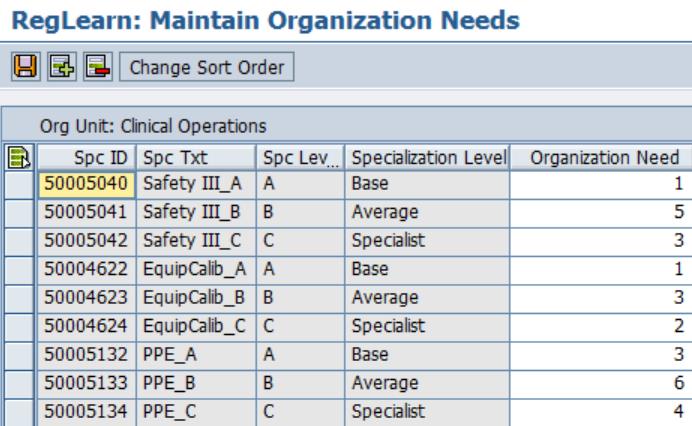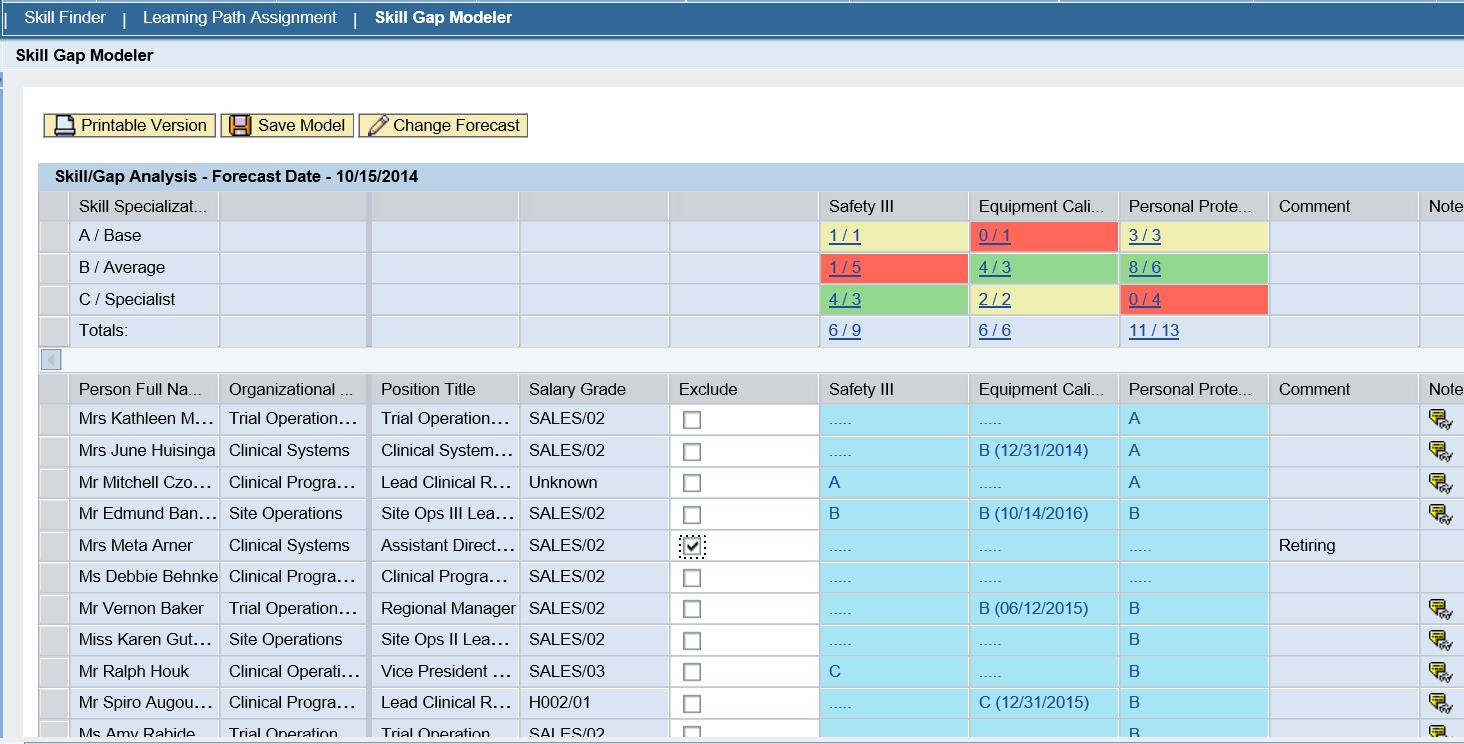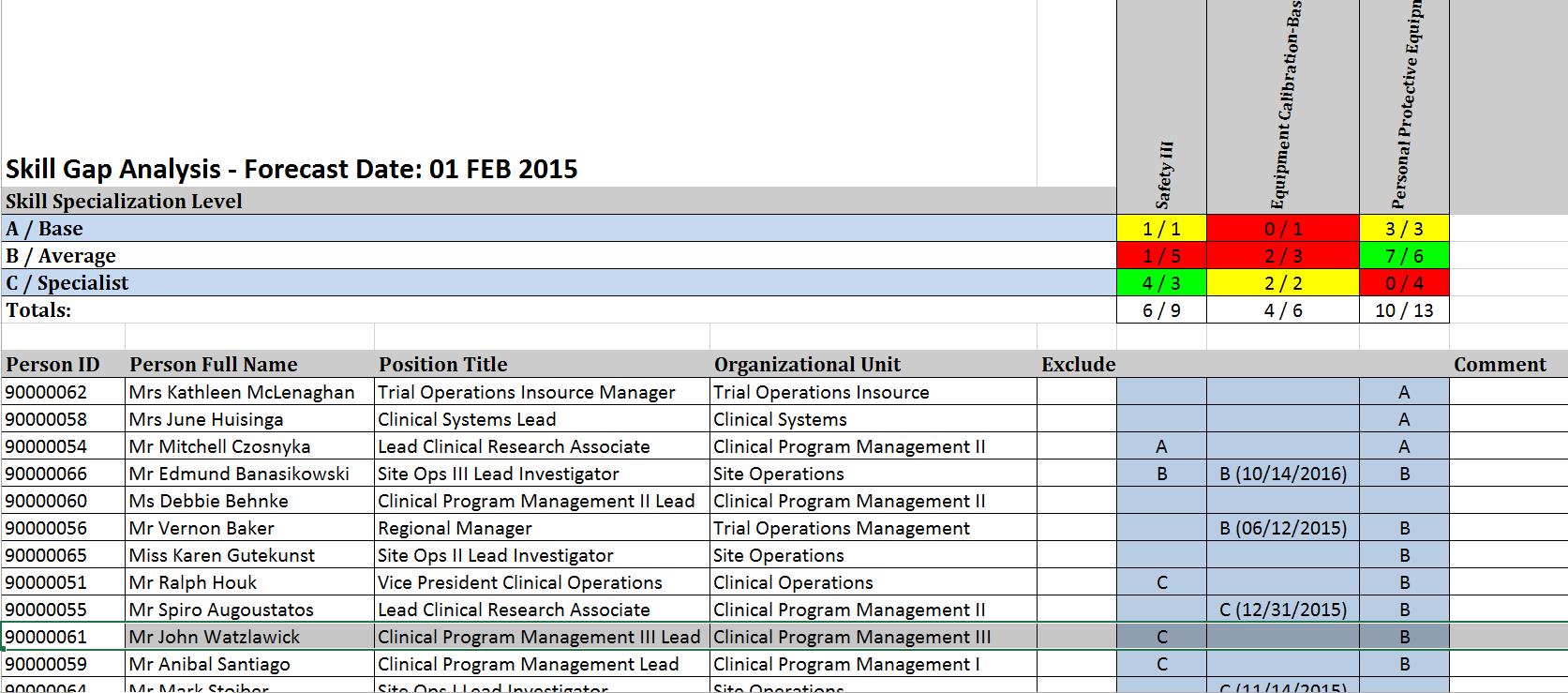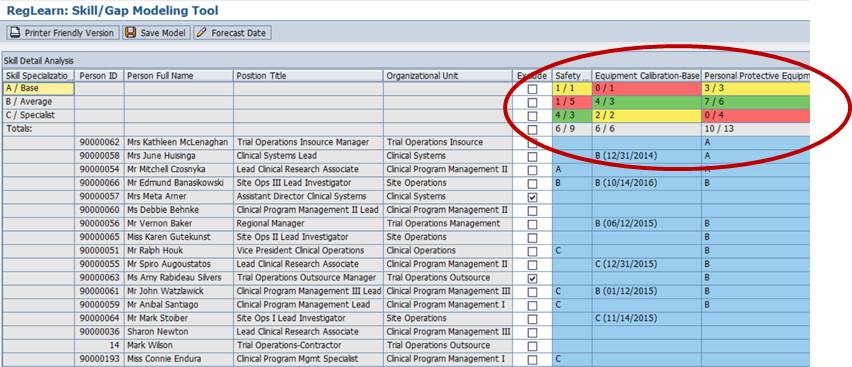10/17/2014
Forecasting Skill Gaps
by Gail Edington
Janine manages a plant with skilled employees who work on three different manufacturing lines. Her company is closing down one line and is about to roll in a new line at her site. Janine needs to identify additional resources to support the new product this year and to help close down the obsolete product line. Since her company already manufactures the new product at another site, they already track the skills she’ll need to support the new line. Janine knows that she will have some transfers with the right skill set coming in and that she’ll have to hire some new employees this year to support the transition. She also knows the company has large growth projections over the next few years for the product line, and because of this, Janine has been tasked to identify current employees at her plant site who can be developed to support the new product line.
Luckily, Janine’s company has RegLearn, an SAP-certified add-on to the SAP Learning Solution. With RegLearn, the Skill Gap Modeler tool lets Janine establish a baseline of skills required for her new product line, determine where she has staffing and training needs, and where she needs to keep an eye on her future skills to reduce the likelihood of a deficit. Janine can even download her models to a spreadsheet to work offline, and work on them away from her desktop. Janine does just that and quickly identifies who she can train in her current group to get them up to speed quickly and where she may need to invest in long-term development or adding headcount.
Let’s take a look at some of the tools Janine was able to use:
The RegLearn Skill Gap Modeler™ facilitates the process of reviewing current organizational skill coverage and generating a forecast of the number of personnel required for a set skill level in the future.
The RegLearn Skill Gap Modeler™ considers the defined skill levels for an organizational unit, the number of required personnel for each defined skill level and the expected end of service within each selected organizational unit.
The first two steps in the process are defining 1) the skills and 2) the organizational requirements for those skills.

Once the baseline is created, a manager can view the organization’s “readiness” and “fit” in the model. The manager can see current staffing levels as compared to the ideal skill level and expiration dates for the staff. In addition, the manager can exclude people from the model and counts as well as make notes regarding exclusions.

The manager can look at the model as of the current date or change the model to reflect skill levels at a future date, taking into account staff turnover and skill expirations.
For offline work, the model can be saved or downloaded to a preformatted, printable spreadsheet:

Administrators can also model and forecast skill levels for organizations in the SAP back-end.
Current Date= 15 October 2014

Future Date= 01 Feb 2015

While Janine’s scenario is fictitious, we have current customers using Skill Gap Modeler in similar scenarios around the world. Another typical use case is evaluating a product line for skills that will be lost due to expected turnover or retirements. Some companies proactively partner with local community colleges to proactively start to build the workforce they will need a few years down the road, or they develop their own, in-house apprenticeship programs (using the RegLearn Structured Learning Path to support their program needs). We’d love to hear about other business needs you can think of for Skill Gap Modeler. Please share your stories!